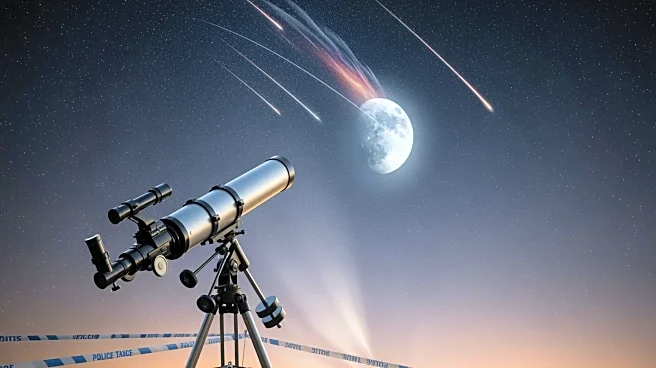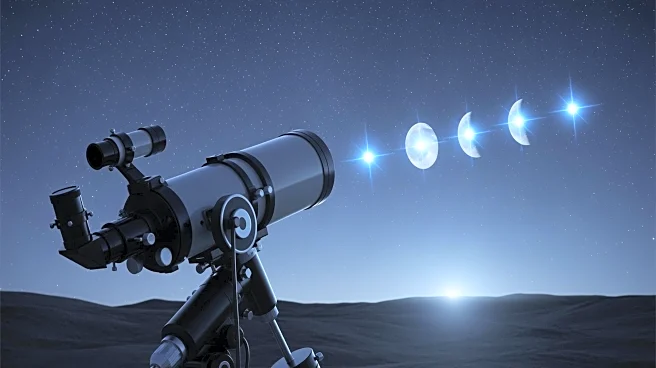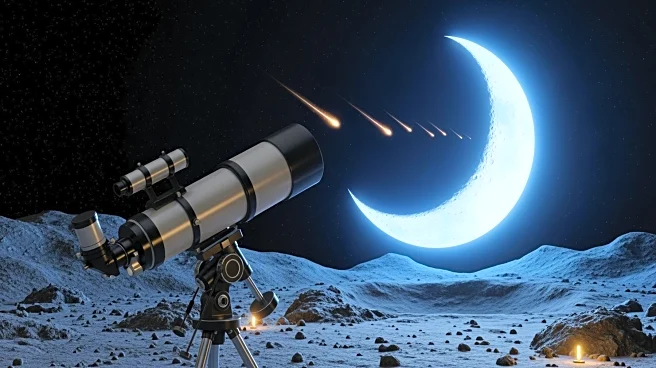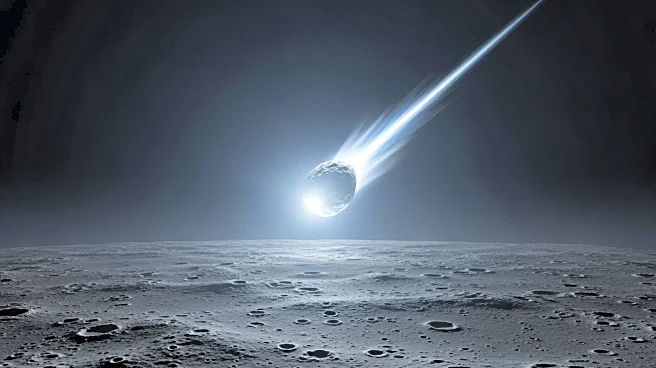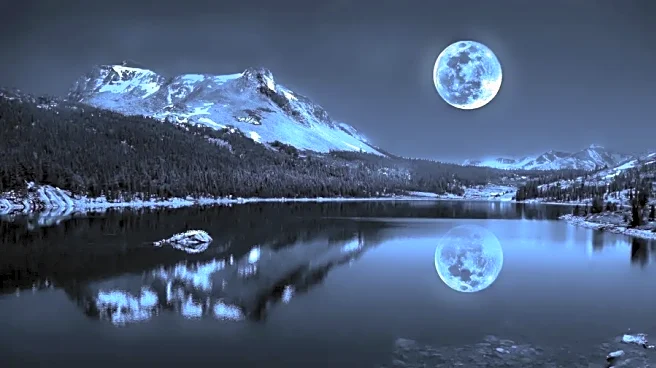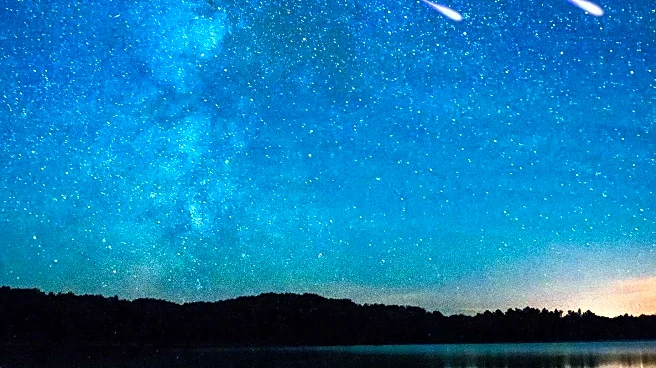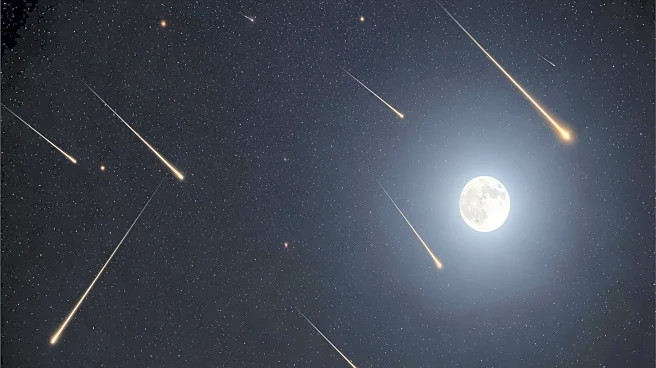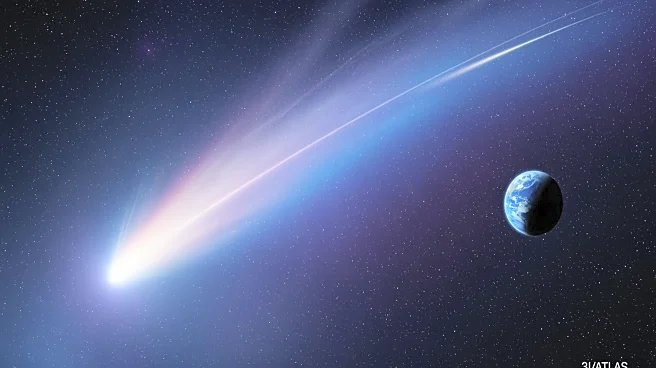What's Happening?
Daichi Fujii, an astronomy curator at the Hiratsuka City Museum, captured footage of meteor impacts on the moon on October 30 and November 1. These flashes were likely caused by the Southern Taurids or Northern
Taurids meteor showers. The impacts were observed on the moon's shaded side, with the first near the Gassendi Crater and the second near Oceanus Procellarum. Fujii's observations highlight the moon's vulnerability to meteoric impacts due to its lack of atmosphere, which allows for visible flashes when craters form.
Why It's Important?
These observations are significant for future lunar missions and the design of moon bases. Understanding the frequency and energy of lunar impacts can inform safety measures and structural designs for lunar infrastructure. NASA's Lunar Impact Monitoring program emphasizes the importance of studying these events to ensure the safety and success of future space exploration. The rarity of observations in this mass range underscores the need for continued monitoring to refine impact rate estimates.
What's Next?
Fujii's ongoing documentation of lunar impacts contributes to the broader understanding of celestial phenomena. Continued observation is crucial for improving predictions and safety measures for lunar missions. NASA and other space agencies will likely focus on capturing more data to better understand the implications of these impacts. As meteor showers continue, astronomers will aim to gather more information to enhance the safety and feasibility of future lunar exploration.
Beyond the Headlines
The study of lunar impacts also provides insights into the behavior and composition of meteoroids, contributing to our understanding of the solar system. These observations can inform broader scientific inquiries and foster public interest in astronomy. The cultural fascination with celestial events highlights the importance of engaging the public in scientific endeavors, supporting the advancement of space exploration.
